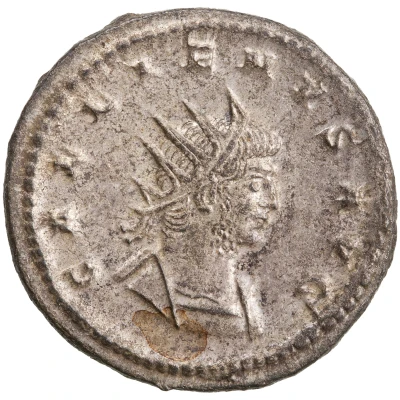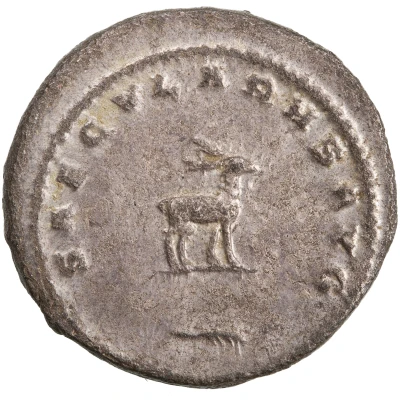Antoninianus - Gallienus SAECVLARES AVG
| Silver | - | - |
| Issuer | Rome › Roman Empire (27 BC - 395 AD) |
|---|---|
| Emperor | Gallienus (Publius Licinius Egnatius Gallienus) (253-268) |
| Type | Standard circulation coin |
| Years | 260-268 |
| Value | Antoninianus (1) |
| Currency | Antoninianus, Reform of Caracalla (AD 215 – 301) |
| Composition | Silver |
| Shape | Round (irregular) |
| Technique | Hammered |
| Demonetized | Yes |
| Updated | 2024-10-05 |
| Numista | N#289497 |
|---|---|
| Rarity index | 100% |
Reverse
Stag, right.
Script: Latin
Lettering: SAECVLARES AVG
Translation:
Saeculares Augusti.
Secular Games of the emperor (Augustus).
Comment
Source:Online Coins of the Roman Empire (OCRE)
Interesting fact
The Antoninianus, also known as the "Gallienus," was a coin introduced by the Roman Emperor Gallienus in 260 AD, during a time of economic crisis and political instability. It was made of silver, but its purity was lower than that of previous Roman silver coins, which had been minted at a higher standard. Despite this, the Antoninianus remained a widely used coin throughout the Roman Empire until the late 3rd century AD. One interesting fact about this coin is that it features a unique design on its reverse side. Instead of the traditional image of a Roman deity or a personification of a province, the Antoninianus features a depiction of a galley, a type of warship used by the Roman navy. This design was meant to symbolize the power and military prowess of the Roman Empire, which was facing threats from external enemies at the time. Overall, the Antoninianus is an important coin in the history of Roman numismatics, as it reflects the economic and political changes that were taking place during a tumultuous period in Roman history.

